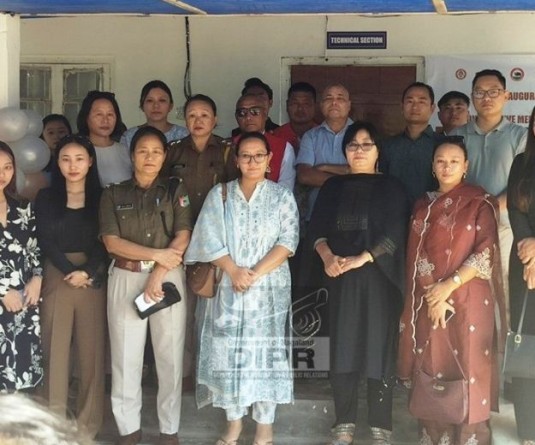
Nagaland yet to have state of the art zoonotic laboratory
Our Correspondent
Kohima | July 6
The need to have inter-sectoral coordination to address and control zoonotic disease in Nagaland was stressed during the observance of World Zoonosis Day here, jointly organized by the departments of Animal Husbandry & Veterinary Services (AH&VS) and Health & Family Welfare (H&FW).
After throughout discussion, it resolved to strengthen inter-sectoral coordination by sharing information and to form a Committee to explore expansion and inclusion of Multisectoral related departments.
World Zoonosis Day is observed every year on July 6 to help raise awareness of the growing risk of zoonotic diseases, which are diseases that can be spread from animals to humans.
H&FW director Dr. Tokoho Chishi expressed happiness that the medical and animal husbandry department had finally came together and to work-out various strategies to control zoonostic diseases in the state.
He was optimistic that the joint endeavor would bring positive results.
“Approximately 150 zoonotic diseases are known to exist. Wildlife serves as a reservoir for many diseases common to domestic animals and humans,” said AH&VS director Dr. Aomangyang Walling.
Persons working with wildlife should be alert to the potential for disease transmission from animals, he said adding that neither animal handlers nor the general public have reason to be alarmed or frightened but everyone should respect the potential for disease transmission and use sound preventive measures.
Generally, disease can be easily prevented than treated, he said.
He said zoonotic diseases can cause extensive human suffering and death. Rabies, a vaccine preventable disease transmitted mostly by dogs, kills about 160 people per day.
Outbreaks of zoonotic disease can be devastating for the economies of both developed and developing nations, he said.
The 2014/2015 outbreak of avian influenza, or “Bird Flu”, in the US led to 48 million birds being euthanised and was estimated to have caused economy-wide losses of around US$33 billion.
People can get zoonotic diseases from contact with infected live poultry, rodents, reptiles, amphibians, insects, and other domestic and wild animals, he said.
According to WHO, about 75% of the new diseases that have affected humans over the past 10 years have been caused by pathogens originating from an animal or from products of animal origin.
Stating that many of these diseases have the potential to spread through various means over long distances and to become global problems, Dr. Walling however said “Yet the knowledge among medical students on all emerging and new infectious diseases is poor.”
Dr. John Kemp, state surveillance officer, IDSP, H&FW said that Nagaland is yet to have state of the art zoonotic laboratory and felt the need to send a proposal to the state government or Government of India to own the same.
Dr. Kemp felt that inter-sectoral coordination is needed between the department H&FW, AH &VS, forest, environment & wildlife and agriculture for prevention and control of zoonotic diseases. He also made suggestion to initiate joint training courses, preparation of IEC materials, formulation of preventive and control guidelines and joint outbreak investigation of zoonotic infection.
“By promoting inter-sectoral collaboration, the department of AH&VS and H&FW hope to achieve optimal health outcomes for both humans and animals,” said Dr. Nyanthung Kikon, state nodal officer, IDSP, H&FW.
Dr. Simon Ao, joint director AH&VS felt the need to constitute Standing Committee on Zoonoses for effective coordination of the allied department.
He regretted that a state level committee is already there but there was no follow up action.
He stated that zoonotic diseases constitute nearly 60% of all known human infections and over 75% of all emerging infectious diseases.
The Indian subcontinent has been identified as one of the four global hot-spots at increased risk for emergence of new infectious diseases.
In addition to being more vulnerable to emerging zoonoses, India has also contributed a major share of the global burden of other endemic zoonoses.
He also stressed on the need to identify diseases of importance occurring in Nagaland that are within the logistic purview of our available logistics for prevention & control.






